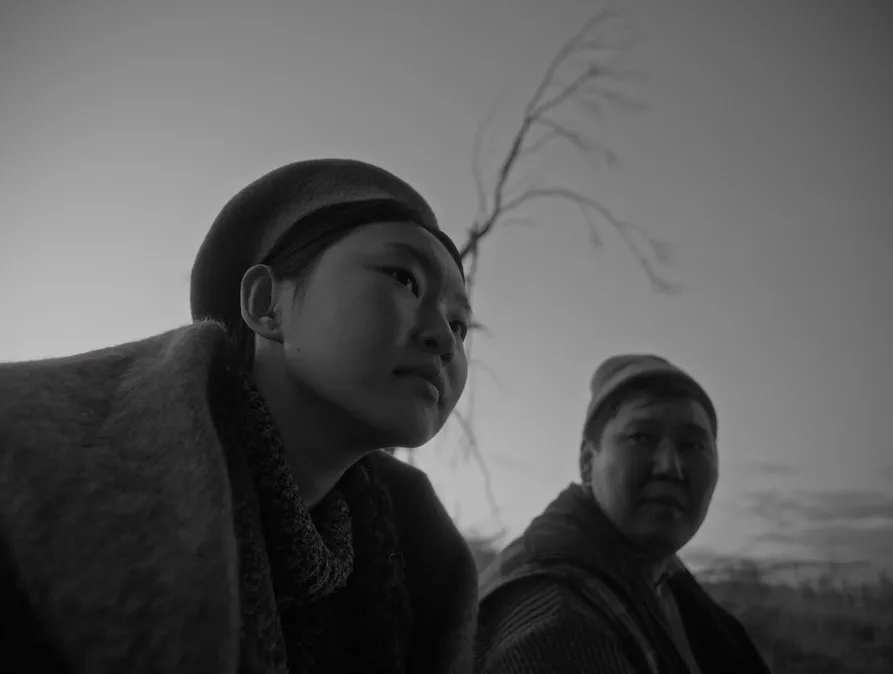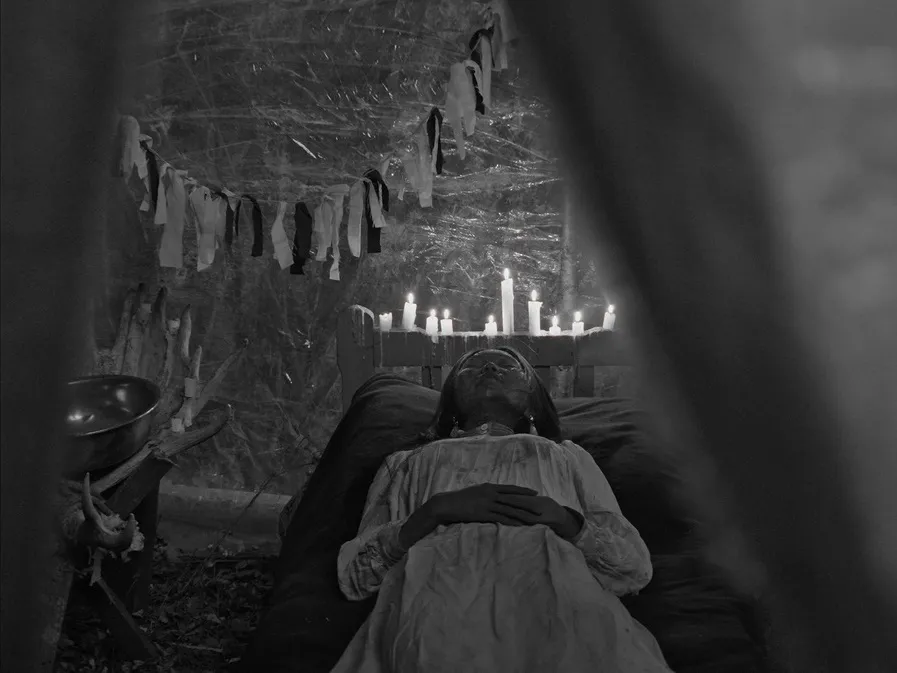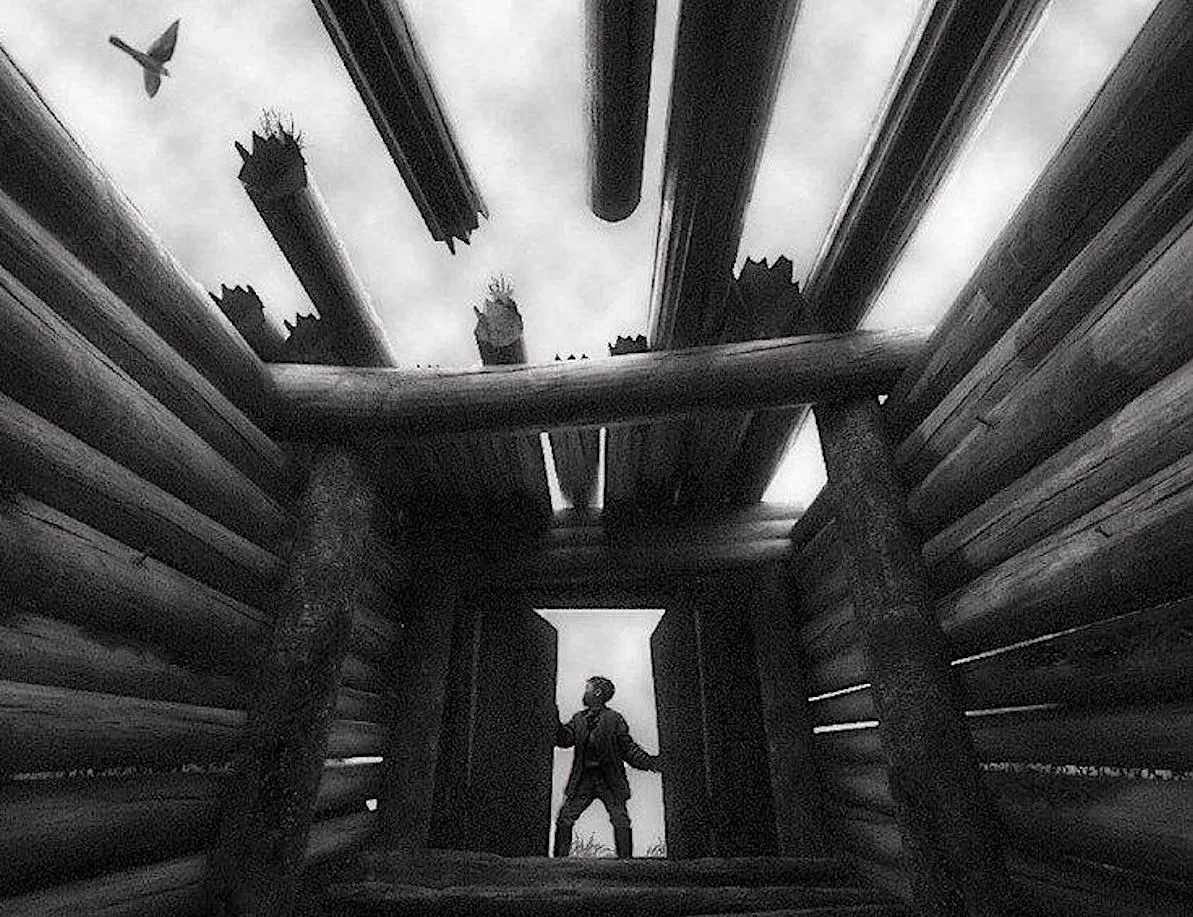The Cuckoo: A Haunting Debut in Yakut Cinema
A young man named Arkady (Ivan Shamaev) returns to a dilapidated, cursed house, the site of a gruesome tragedy from his adolescence. Sharing the property is a reclusive old man (Nikolai Soldatov) who clearly resents Arkady’s arrival, greeting him with a shotgun rather than a welcome. However, the old man isn’t the only presence in the rural duplex. At night, clawed hands emerge from the shadows, and the spectral figure of a woman named Sayaana (Sayana Banzaraktsaeva) flickers in the windows. Her story unfolds in a brief prologue: she married, lost her child in childbirth, hanged herself in the forest, and rose during her own funeral, possessed by an evil spirit. Arkady has returned to perform an exorcism and lay Sayaana’s soul to rest once and for all.

Still from “The Cuckoo”
“The Cuckoo” evolved from a short film of the same name by director Evgeny Nikolaev, a protégé of Dmitry Davydov, a leading figure in the New Yakut Cinema movement. Davydov assisted the young filmmaker with the script, production, and actively promoted his colleague at international and domestic film festivals. This mentorship proved exemplary. In his debut feature, Nikolaev diligently adheres to the core tenets of the movement while forging his own path. “The Cuckoo” is inherently original yet seamlessly integrates into the broader paradigm of contemporary Yakut cinema.

Still from “The Cuckoo”
Distinctive Style and Visual Storytelling
Nikolaev employs techniques familiar to fans of regional masterpieces: non-professional actors, long panoramic shots, and a strictly static camera even during moments of high tension. The film features intricate mise-en-scène and masterful use of light and shadow, which is particularly striking given that it’s shot in black and white. “The Cuckoo” is largely devoid of dialogue, relying on visual storytelling, which further immerses the viewer but also adds complexity to the narrative. Nikolaev admits that he conceived “The Cuckoo” as a festival film rather than a mainstream one, and therefore didn’t initially aim for a wide audience. The film’s concept came to him in a dream, explaining the dreamlike structure, the blurring of reality and illusion, and the enigmatic mystical elements.

Still from “The Cuckoo”
Layers of Interpretation
“The Cuckoo” lends itself to multiple interpretations, readily engaging with an appreciative and inquisitive audience. The film can be approached through a religious lens, with elements of shamanism and Yakut mythology forming the narrative’s backbone. Alternatively, a psychoanalytic interpretation is possible, viewing the film as a clash between the conscious, subconscious, and unconscious. Or, one can simply embrace “The Cuckoo” as a ghost and demon story with a unique ethnic flavor. This multifaceted nature benefits Nikolaev’s film. If “The Cuckoo” reaches wider distribution, these debates will undoubtedly fuel interest in this atypical Yakut horror film.
A Promising Debut
Despite its strengths, Evgeny Nikolaev’s work remains a fairly standard debut. Having made the traditional transition from short to feature film, “The Cuckoo” seems to have lost some of its intensity while gaining in length. The story has evolved beautifully from a fragment of a feverish dream into a complete narrative, but it feels somewhat stretched across its hour and a half runtime. As a result, the tension that builds throughout the film lacks the necessary momentum for a final surge towards the climax. Nevertheless, “The Cuckoo” represents a significant step for Nikolaev, a pivotal moment where he transitions from simply a “young” filmmaker to a “young and promising” one. And, judging by this debut, Dmitry Davydov’s student has everything it takes to etch his name into the history of the New Yakut Cinema alongside his mentor.